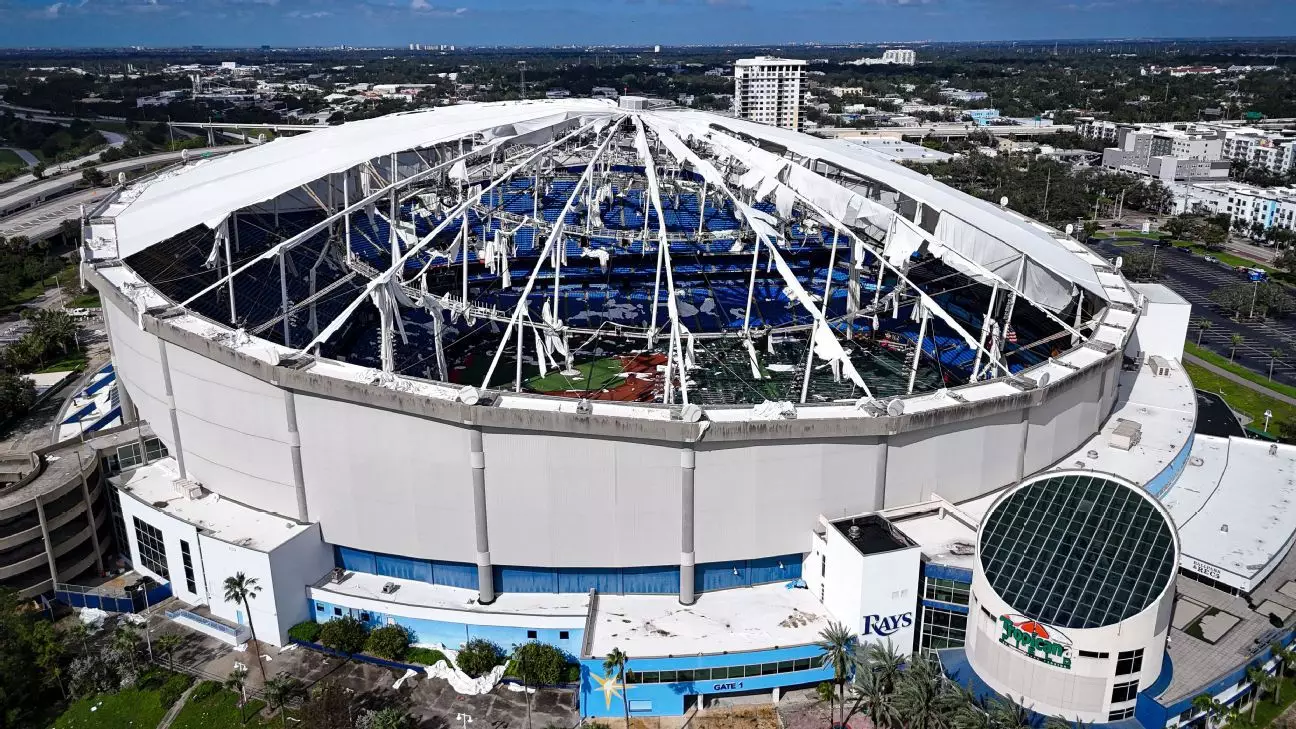The Tampa Bay Rays are at a critical juncture regarding their future home, as discussions about a new $1.3 billion baseball stadium in St. Petersburg, Florida, remain unresolved. Principal owner Stuart Sternberg has expressed uncertainty about moving forward with the project, which is intended to replace the aging Tropicana Field. This development is not just about a new place to play; it embodies the aspirations of a franchise striving to enhance its revenue potential and community engagement. However, an array of obstacles have emerged, primarily linked to financial commitments and construction timelines.
Local government entities had previously granted approvals for bond sales to support this ambitious venture, indicating a collaborative spirit among stakeholders. Nevertheless, a combination of bureaucratic delays and escalating costs has thrown a wrench into the Rays’ plans. According to reports, restrictions tied to public financing require the team to demonstrate financial viability, particularly their capacity to cover a $700 million portion of the expenses. The looming March 31 deadline imposes a timeline that the team must adhere to, raising concerns over their readiness to meet necessary conditions.
Sternberg’s comments signify apprehension surrounding public financing, which is critical for the stadium project to take off. The potential collapse of this financing poses a severe risk, throwing the Rays into deeper financial disarray. A recent letter to the Pinellas County board illustrated how crucial it is for the team to adhere to timelines, as delays could jeopardize the expected 2028 opening. The possibility of extending this timeline to 2029 is not only impractical but could lead to exorbitant costs, further complicating the situation.
Reactions from local officials have highlighted growing frustrations within the community. Pinellas County Commissioner Chris Latvala’s poignant suggestion to “sell the team” reflects a deep-seated dissatisfaction among some public figures regarding the ownership’s commitment. Such sentiments underline the tenuous relationship between the Rays and their fanbase, particularly when attendance figures—averaging just over 16,500 in 2022—indicate a dwindling local interest in the franchise.
Adding to the uncertainty is the recent damage sustained by Tropicana Field due to Hurricane Milton, rendering the stadium unplayable for the upcoming 2025 season. This natural disaster has forced the Rays to seek alternative venues, including relocating to the New York Yankees’ spring training site in Tampa. Such transitions can undermine the sense of stability that a dedicated home stadium provides and may also impact fan engagement negatively.
As the Rays navigate these multifaceted challenges, their strategic decisions in the coming weeks will be vital. The interdependence of community trust, financial backing, and successful execution of stadium plans will define the franchise’s future in the Tampa Bay area. A failure to address these issues comprehensively could threaten not just the stadium project but the very existence of Major League Baseball in this region. The Rays must take bold steps; otherwise, they risk having to reconsider their long-term viability in Florida.


Leave a Reply